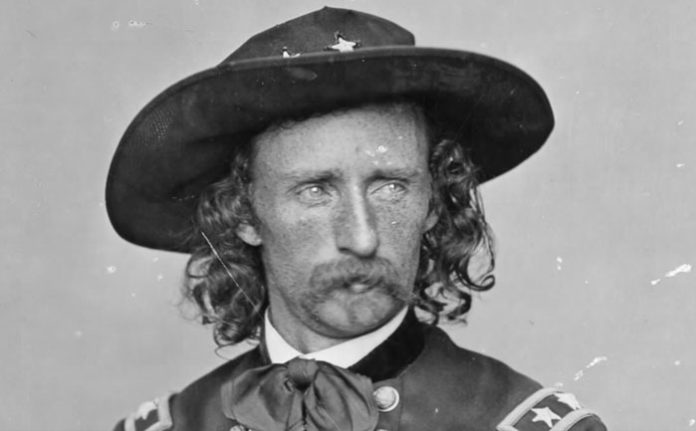Few troopers in Custer’s famed unit had any combat experience when they rode against the Sioux at the Little Bighorn River in Montana.
There are few battles in the annals of American history that hold the public imagination as much as the Battle of the Little Bighorn. The defeat of General George Armstrong Custer and the companies in his immediate command on the hills above the banks of the Little Bighorn River is the thing of legend and lore, as well as books and movies.
But his death marked the end of a rather uneventful time on the frontier.
Custer and the Civil War
Custer built his legend as a leader of fighting men in the American Civil War. In the book The Custer Reader by Paul Andrew Hutton, Custer is described as the young “General with the Golden Locks.”
The book also relates that in the years after the Civil War Custer was recognized by most Americans, at least in the North, as a hero.
It would seem obvious that in the decade after the Civil War, when the country’s attention turned to western expansion, the nation looked to him as the likely candidate to serve as an Indian fighter.
During the 11 years between Appomattox and the Battle of the Little Bighorn Custer commanded the Seventh Cavalry. A unit that had the reputation as the Fighting Seventh.
But that reputation was more lore than fact.
During the unit’s time in the reconstruction South it did see some light action against moonshiners and members of the Ku Klux Klan.
The Seventh Cavalry in the American West
But its duty changed when it was relocated to Kansas in 1867. It is from there that the unit saw its only major engagement with Indians during the Battle of Washita on Nov. 27, 1868.
Custer and the Seventh attacked the Cheyenne camp of Black Kettle. The battle resulted in losses to the Seventh of 21 men killed and 13 wounded.
The higher estimates of Indian losses include more than 100 warriors kille, as well as many women and children.
The next years of the Seventh included less action.
The unit moved to Fort Abraham Lincoln in 1873 and saw two skirmishes with the Sioux that summer during the Yellowstone Expedition, and no conflict during the Black Hills Expedition of 1874. The Seventh did not take to the field in 1875.
When the Seventh left Fort Lincoln for the 1876 Expedition against the Sioux it was hardly an experienced Indian fighting unit.
James Donovan estimates in the book, A Terrible Glory only 30 percent of the troopers riding towards the Little Bighorn River had any Indian fighting experience.
And 63 troopers were new recruits who arrived at Fort Lincoln less than two weeks before the expedition departed.








